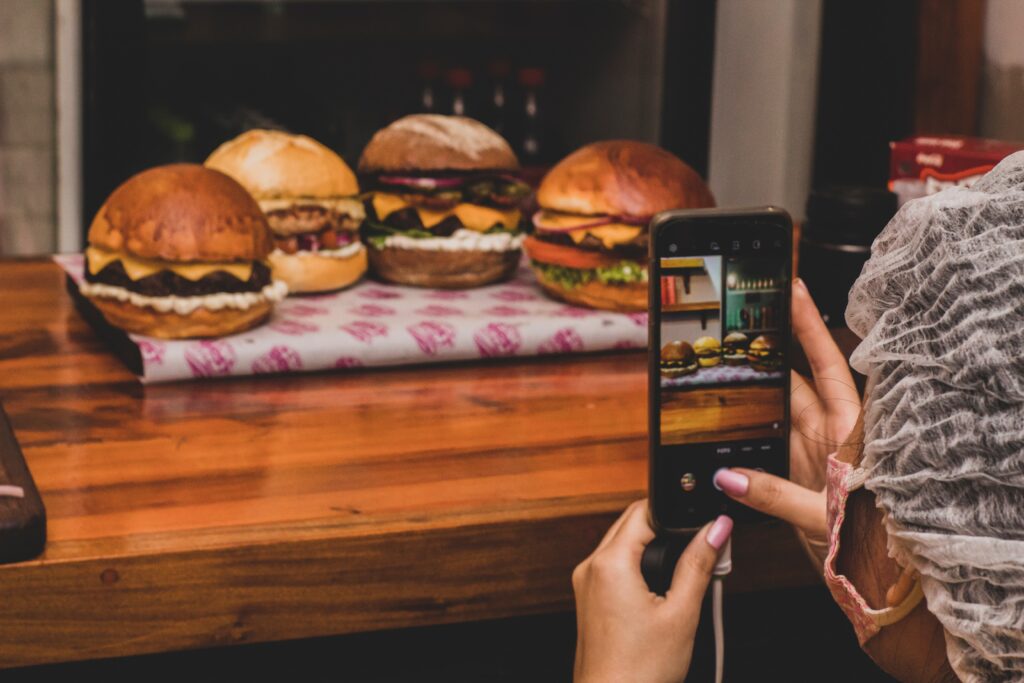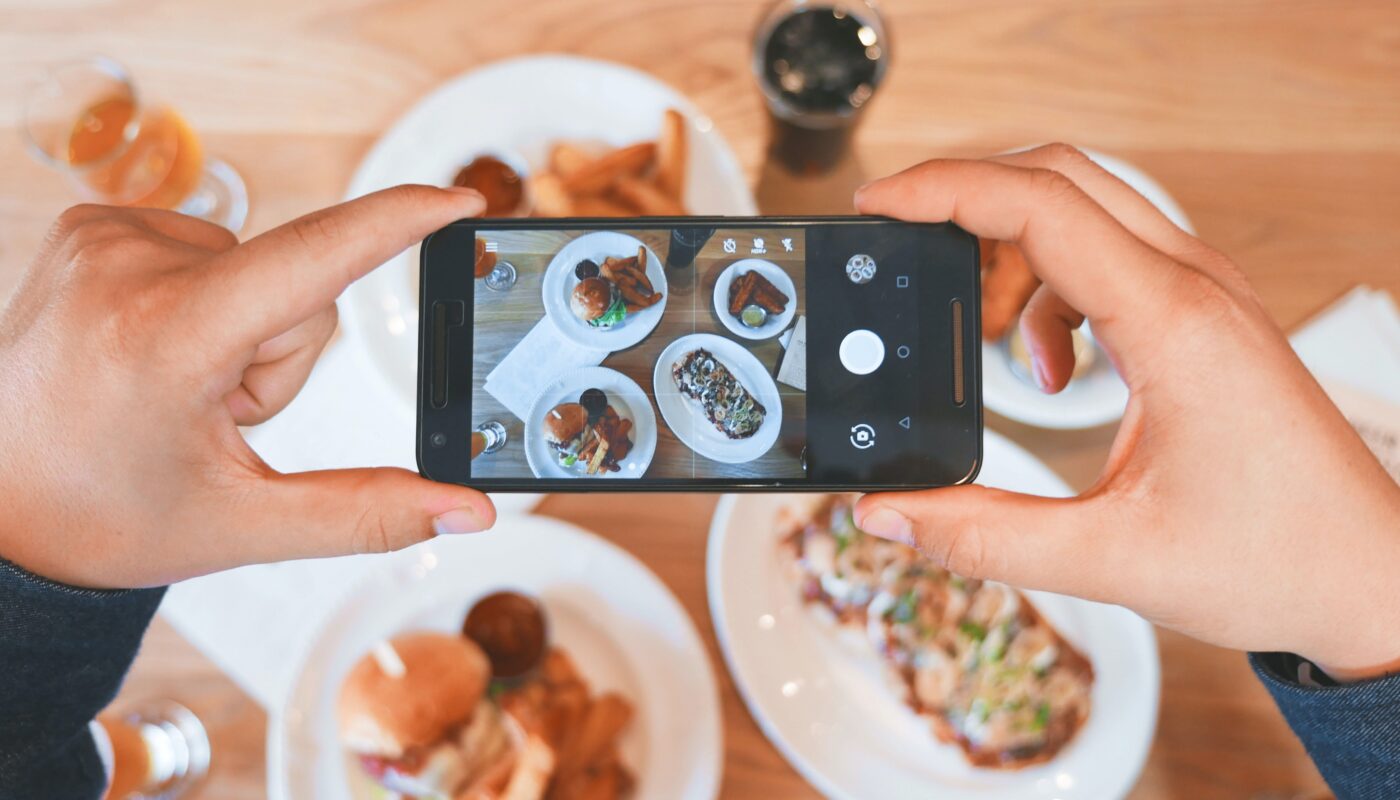By Jason Nasser-Marsh
“The phone eats first” is part of our cultural vernacular for a reason. At this point, we are all pretty used to seeing photos of our favorite (and least favorite) foods and restaurants all over the internet. People love to flex the good food they’re eating, and restaurants love to show off what they’re creating.
The in-your-face visuals of social media just make sense for restaurant promotion. But with every national chain and mom-and-pop burger joint posting every menu item under the sun, it can be hard for restaurants to stand out on people’s feeds and make the connection that (ideally) leads to a line of customers out the door.
Here are four steps restaurants can take to grow and maintain a social media following across the main platforms.
1) Establish a distinct consistent visual style and voice across all platforms
Take high-quality photos. Find the funky font that fits your business’s vibe the best. Write in the same short-and-sweet voice every post. Essentially, create a visual shorthand for your restaurant that people can identify. Then use this style across all the platforms you post on. Consistency is key to any good brand, and that doesn’t just apply to your product.

2) Customize content for each platform
Gone are the days when a one-size-fits-all social media strategy can cut it. In today’s digital landscape, companies that recycle content across platforms often miss out on maximizing their reach. Each social platform dances to the beat of its own algorithm, determining who sees your content and in what numbers. It’s crucial to grasp the nuances of each channel and leverage their strengths. By tailoring your content to suit the unique characteristics of each platform, you not only keep things fresh and exciting but also unlock higher engagement.
3) Video reigns supreme
With today’s social media algorithms, video content reigns supreme. Instagram and Facebook give priority to videos, often resulting in higher engagement and vibrant conversations in the comments section. As the popularity of TikTok soars, embracing the power of video is key. Whether it’s a behind-the-scenes peek, recipe tutorials, or captivating short clips, incorporating video into your social media strategy is a game-changer.
4) Captions are crucial
Crafting captions that avoid being overly salesy can foster community engagement and stimulate online conversations surrounding your brand. By offering promotions and seeking input from your followers on menu items, you provide incentives for people to actively participate. This approach not only sparks interest, but also establishes a sense of belonging and involvement among your audience.




This post offers great advice for restaurants looking to improve their social media presence! I appreciate how you mentioned the importance of modifying your content for each platform. So often accounts, often restaurants and businesses with a smaller in-house staff, share the same strategies on each platform. Although this capitalizes on convenience, it can cause brands to miss out on engagement they otherwise could have received from maximizing each platform’s algorithm. Great post!
I found the tips you provided in this blog post to be helpful and insightful! I like that you touched on video content and its influence over user engagement. Short-form video content is easily digestible and entertaining, and I personally find myself spending more time scrolling through videos on TikTok than photos on Instagram. Video content is more engaging and can feel more authentic than a promotional photo post. Brands and businesses can establishing meaningful connections with key audiences by utilizing video to tell their unique stories.
Thanks for sharing. I enjoyed this post as someone who is a foodie! I agree that having a clear and concise voice across platforms and creating high-quality content are two crucial points you made regarding content for restaurants. I think a common misconception is that you need to hire a photographer to get high-quality shots when taking time to learn about lining and angles can transform smaller businesses’ photography. Tailoring your content to various platforms is essential, which is why limiting the number of platforms you commit to is also important. Often, when teams over-commit to several platforms, they cannot put the time needed into each.